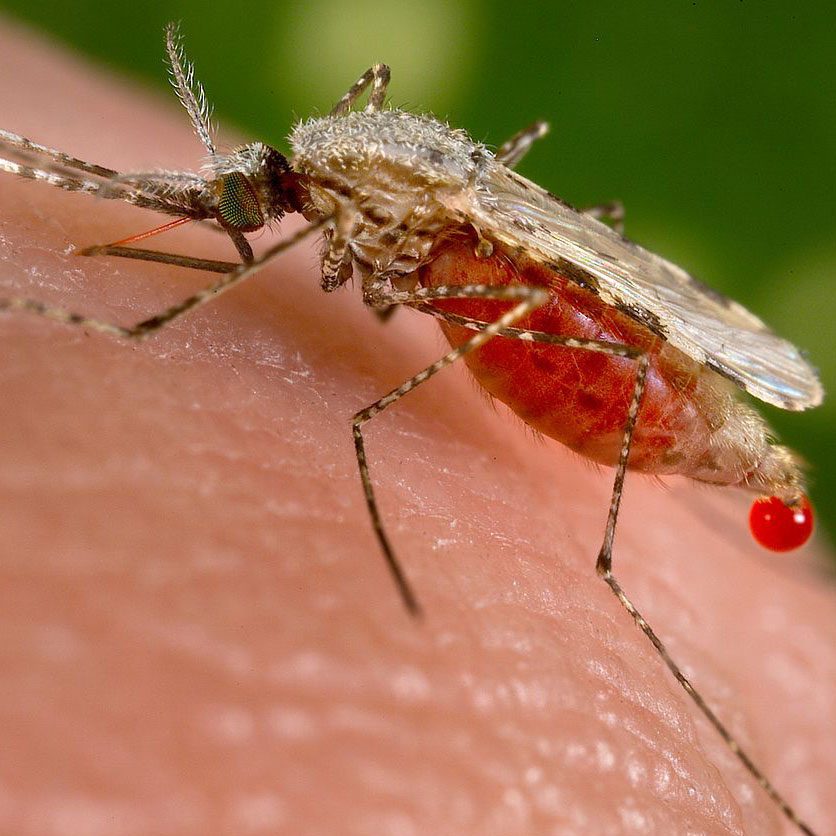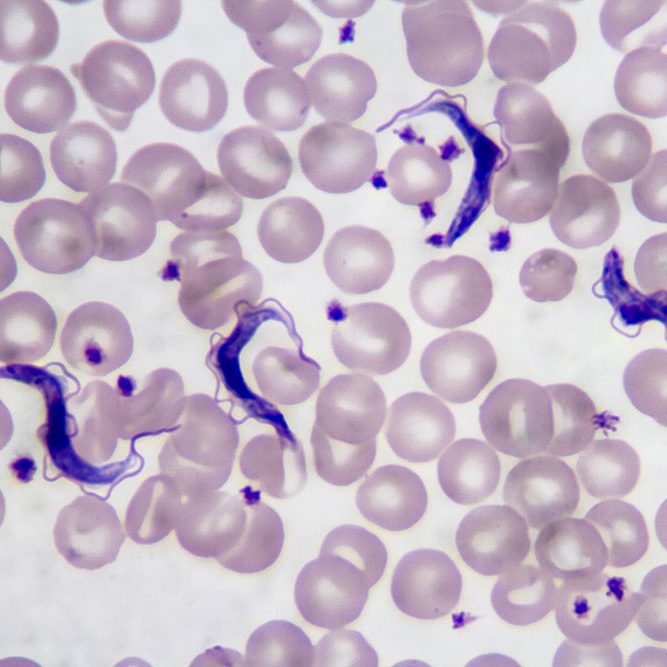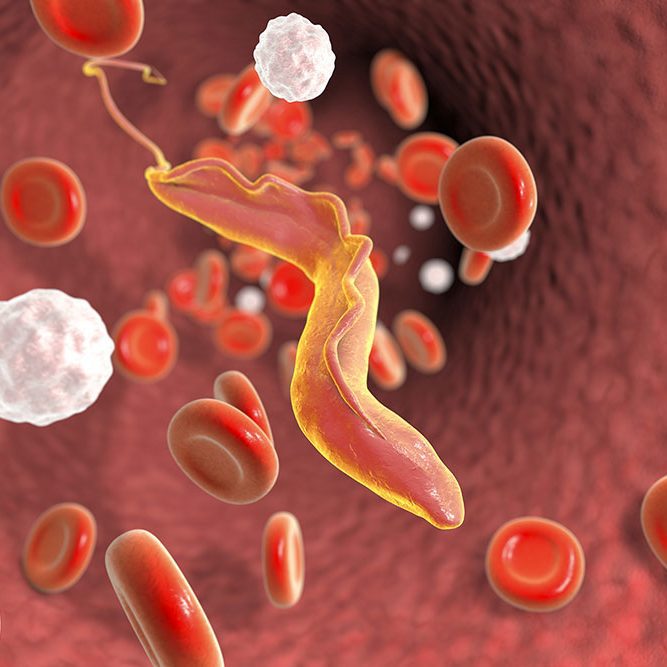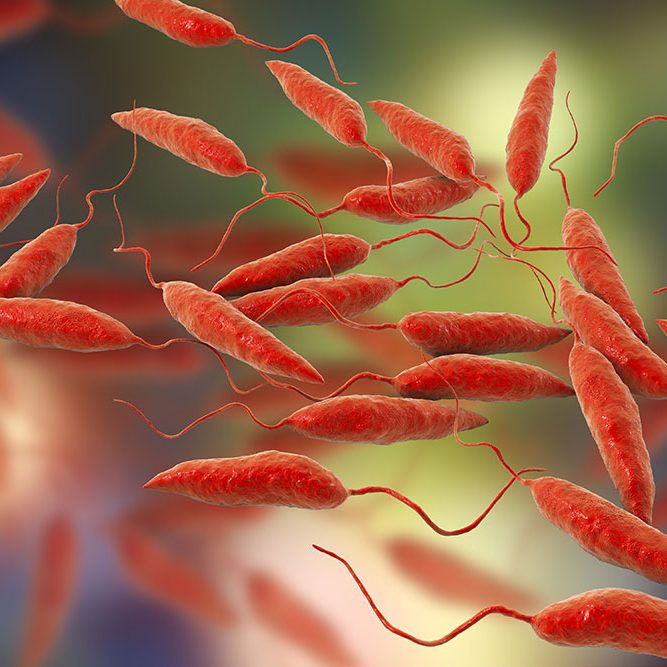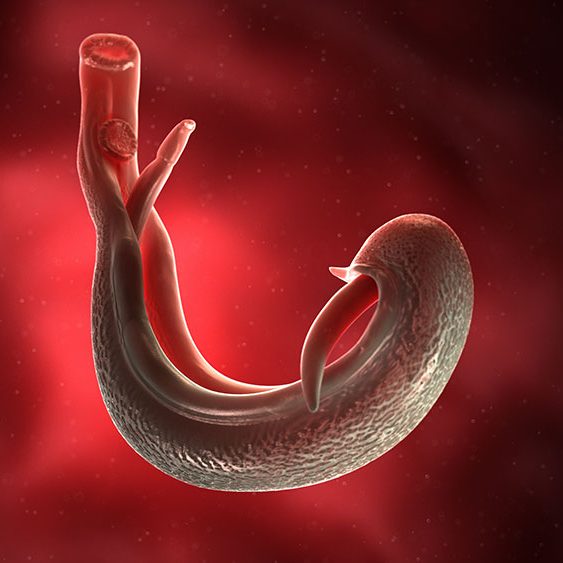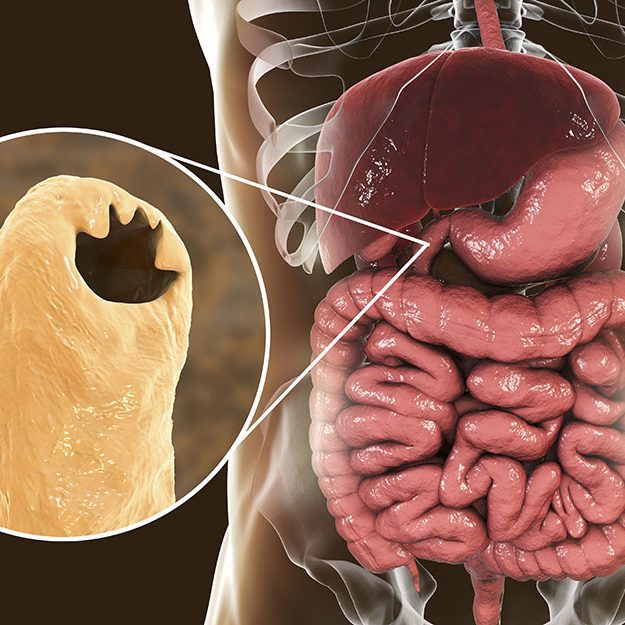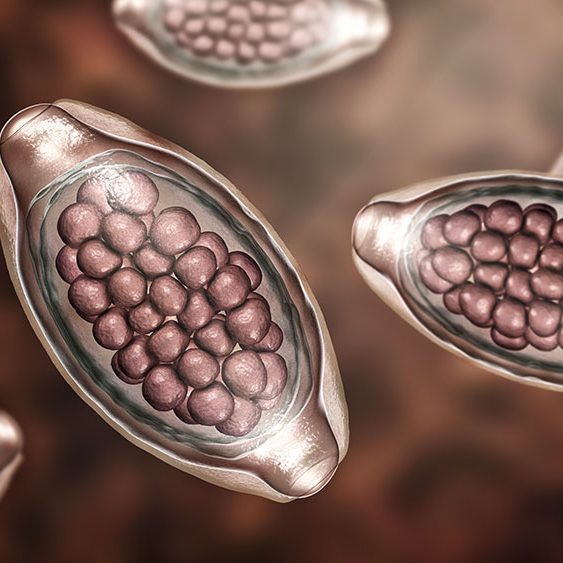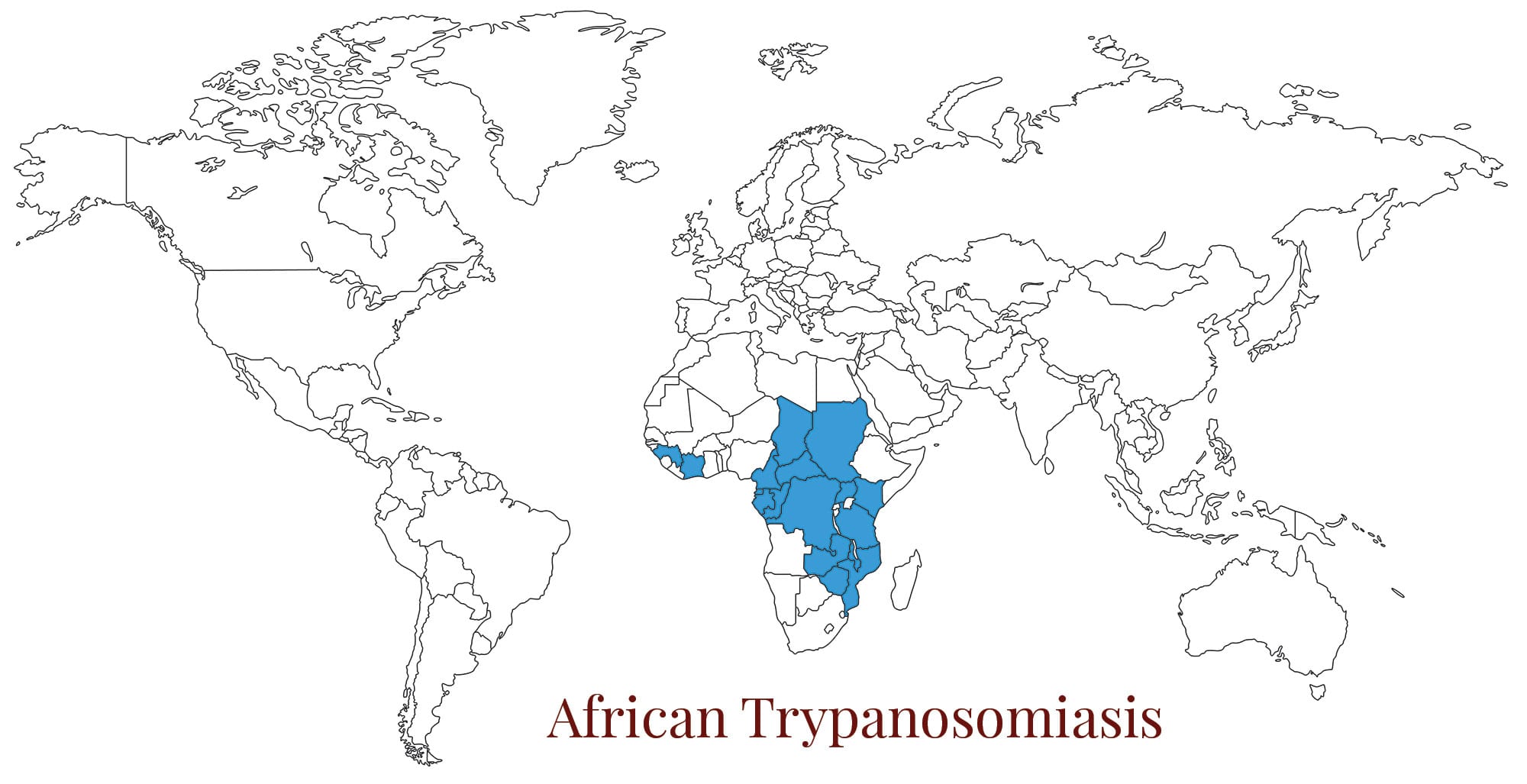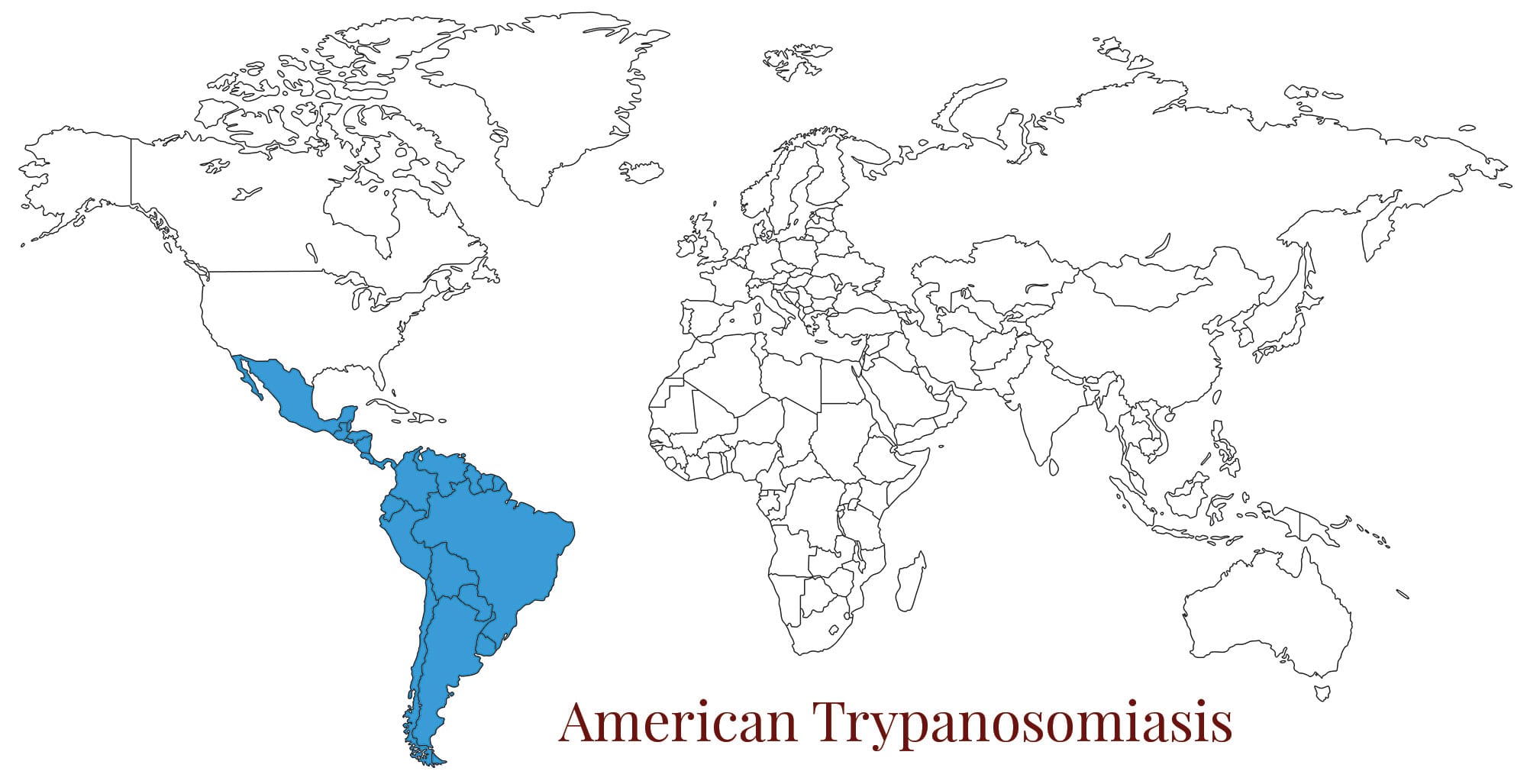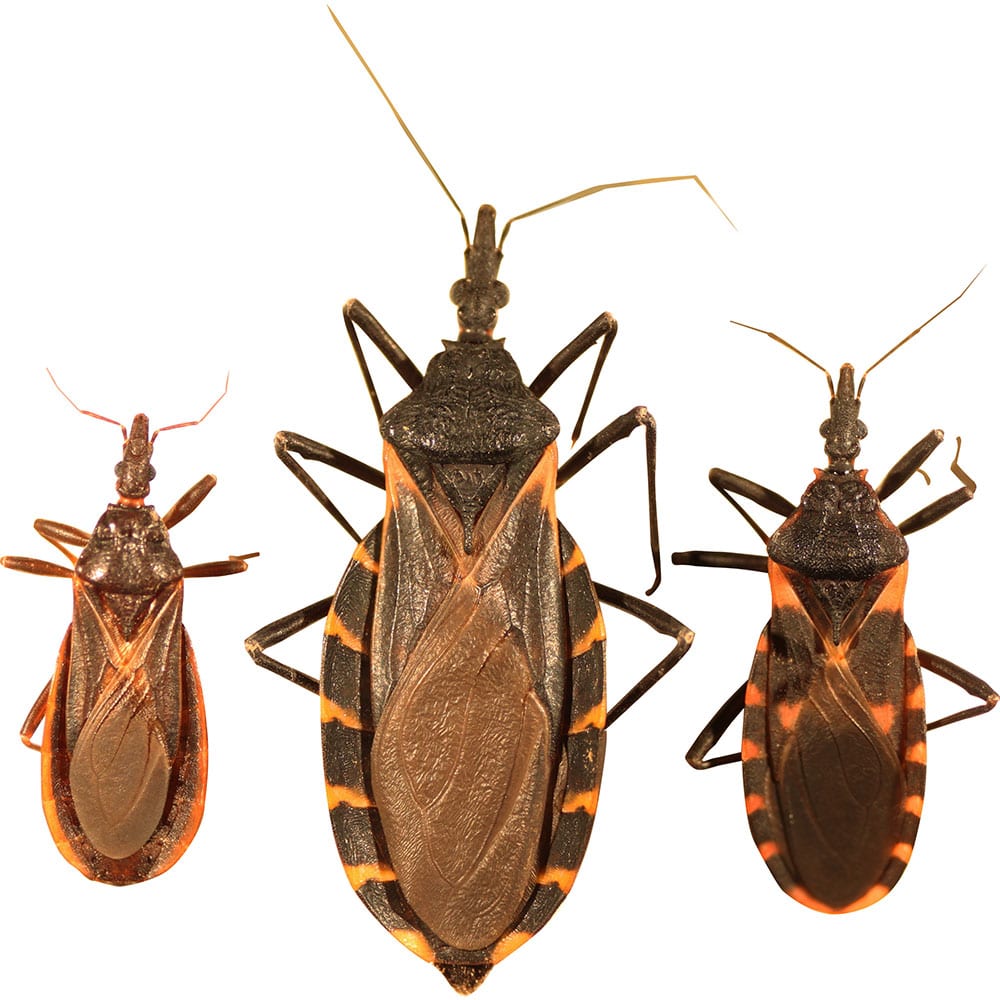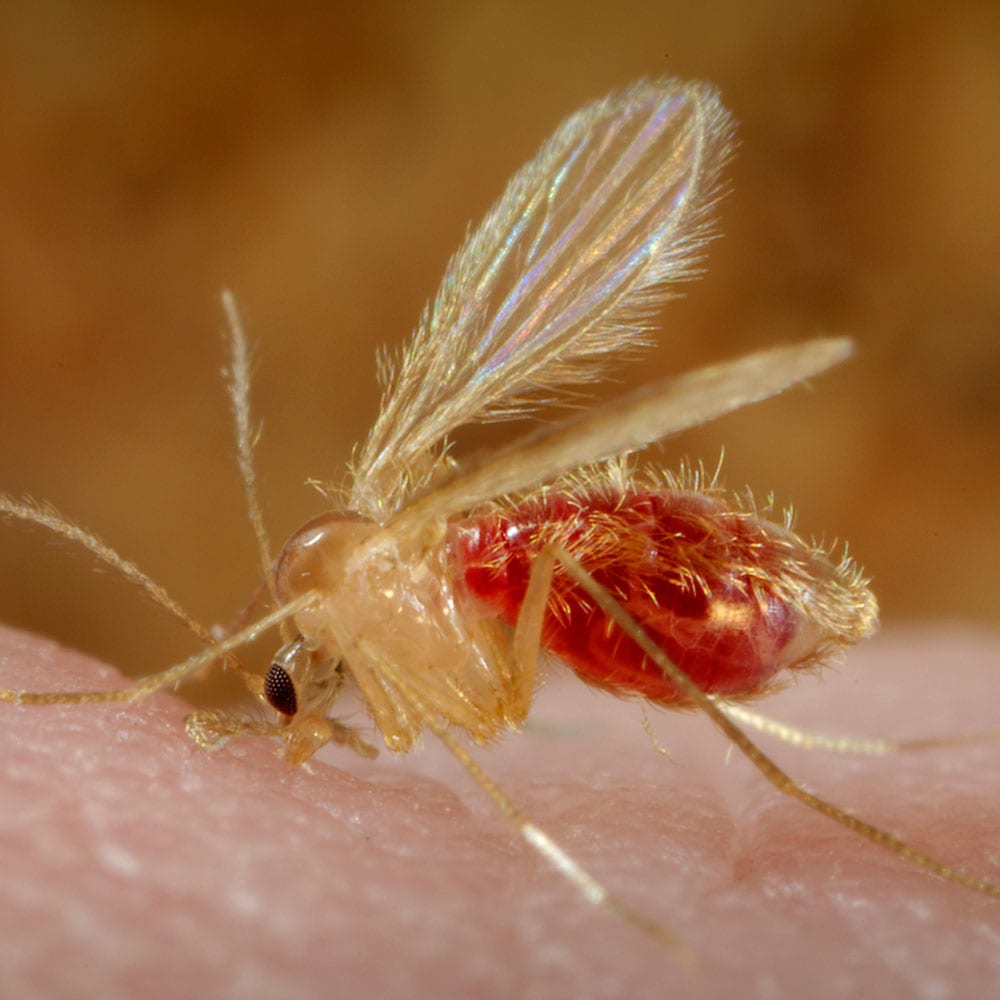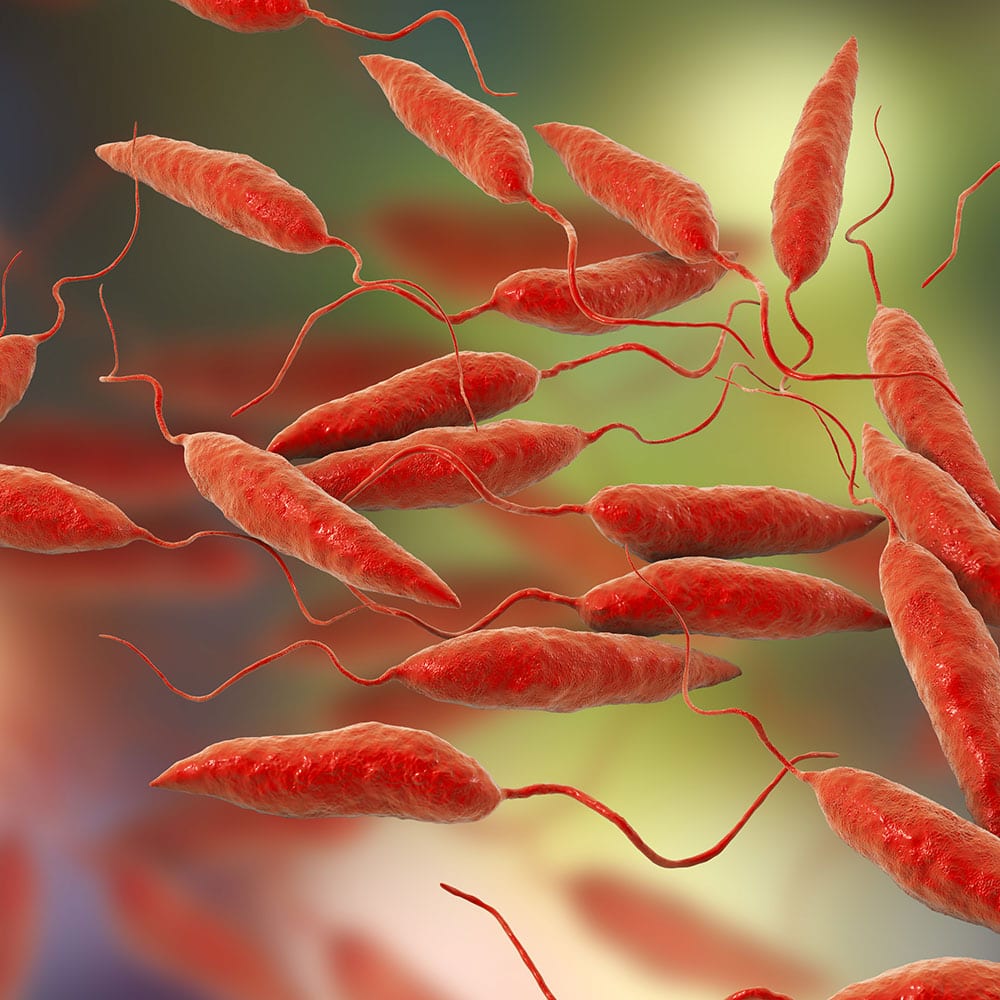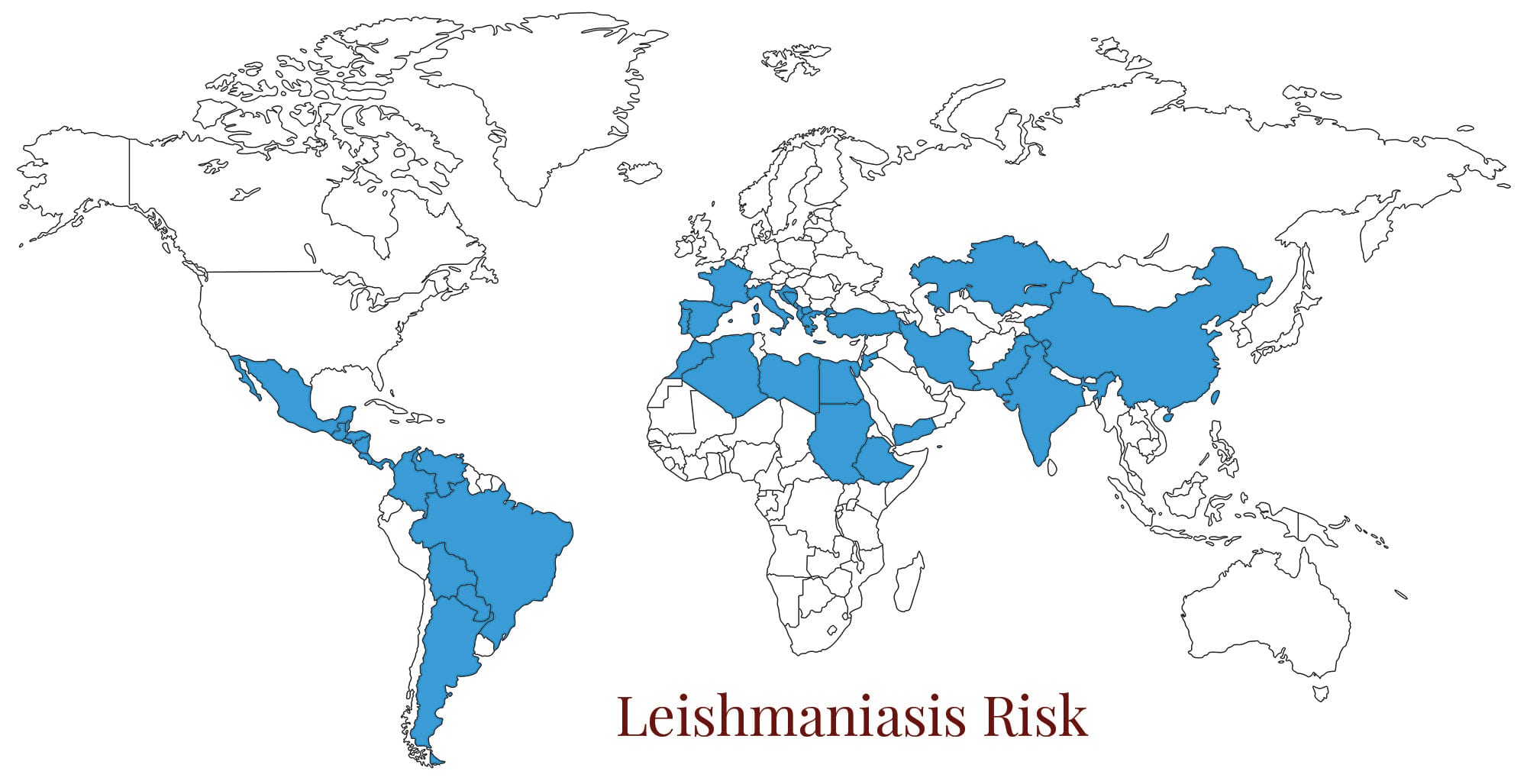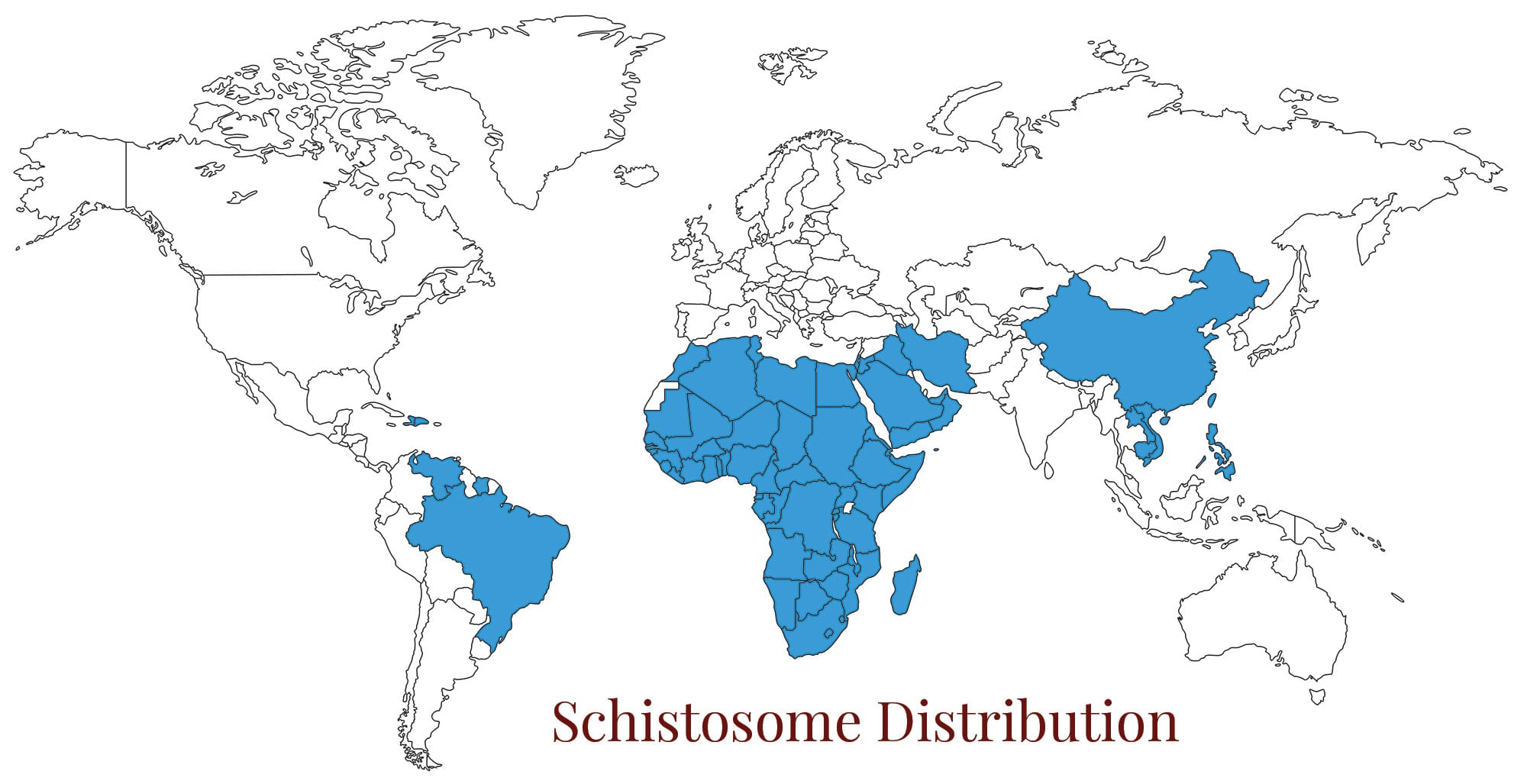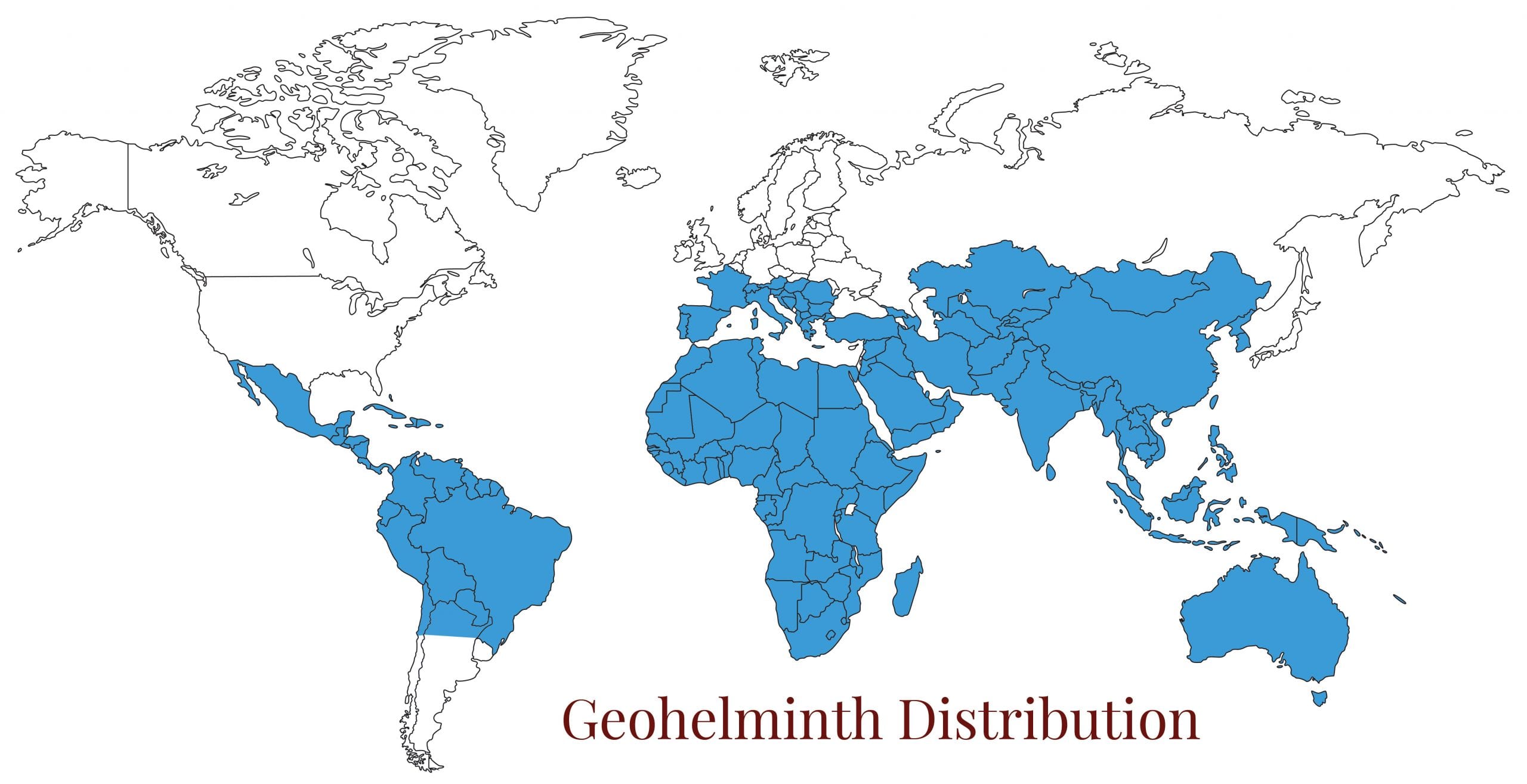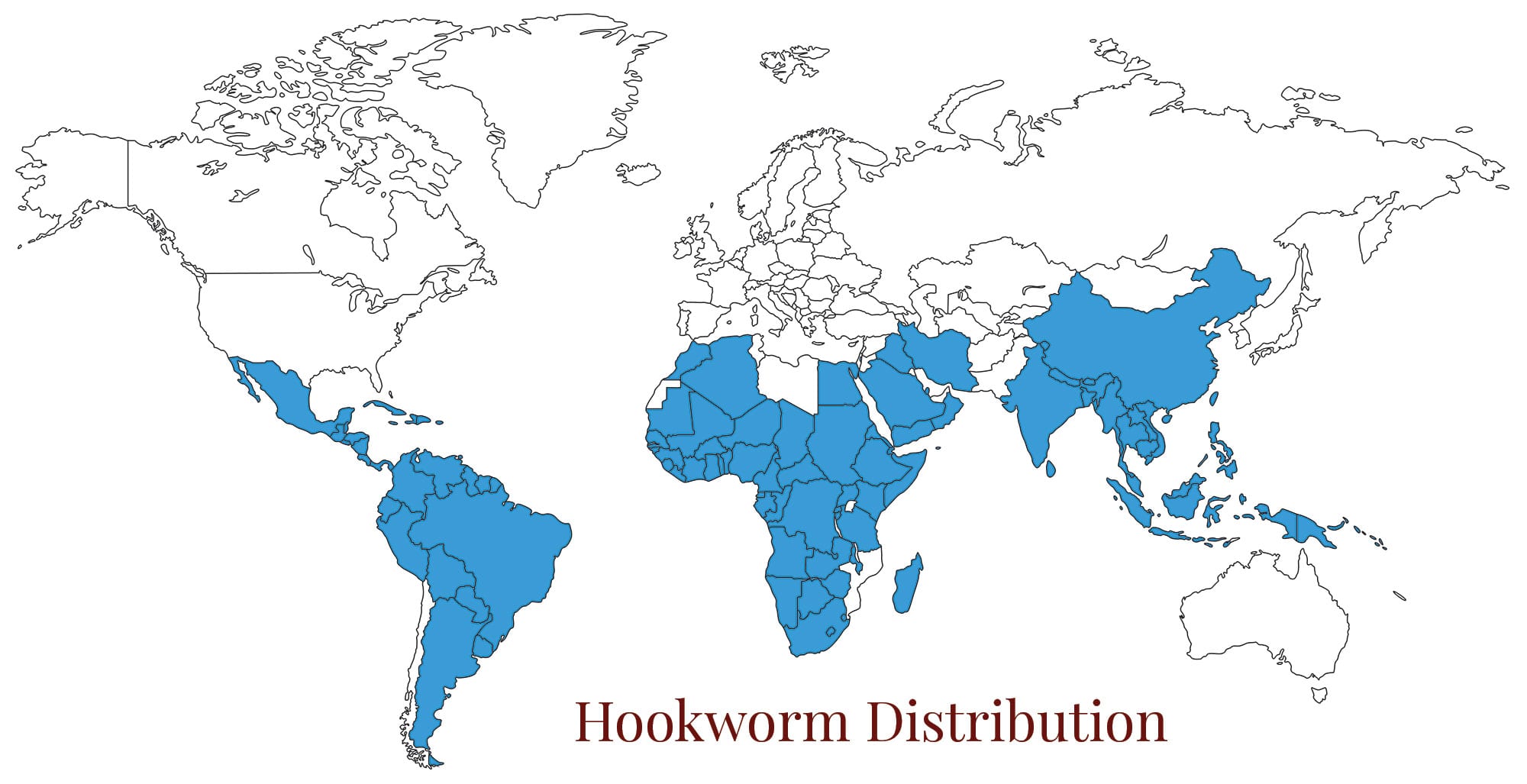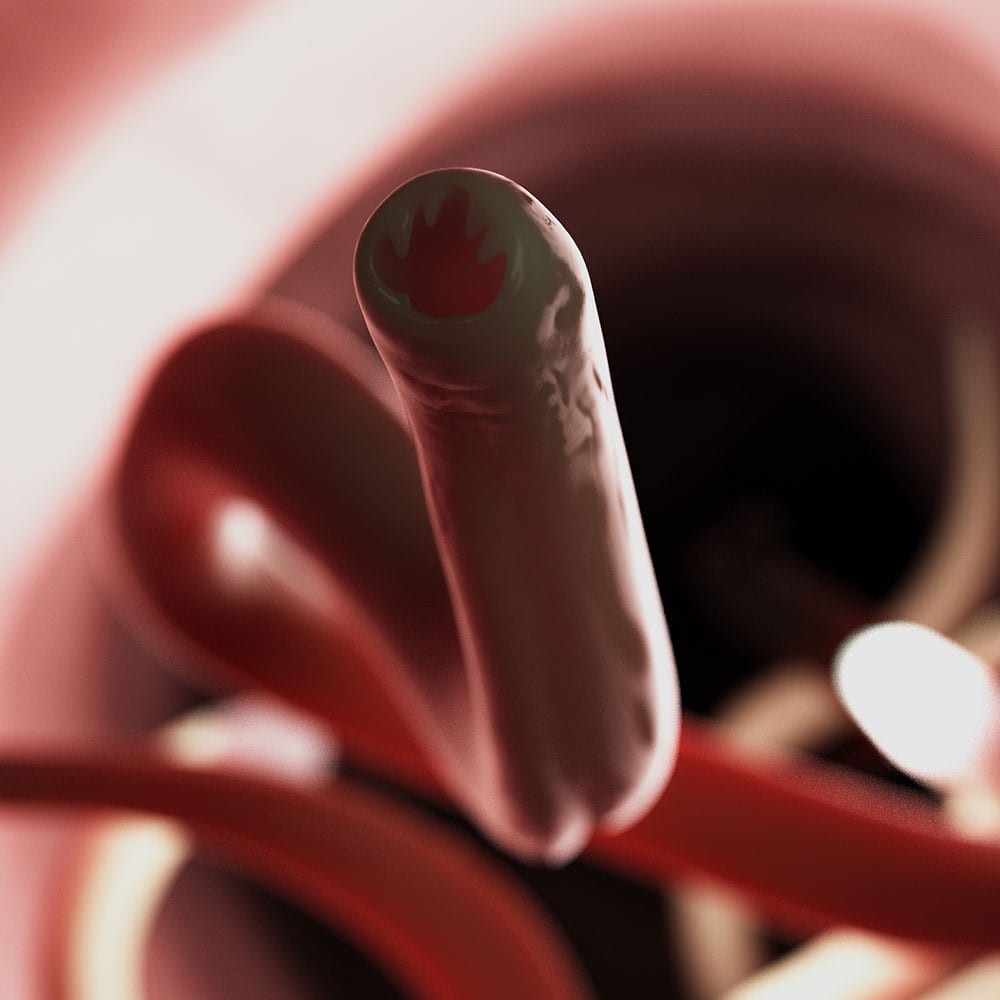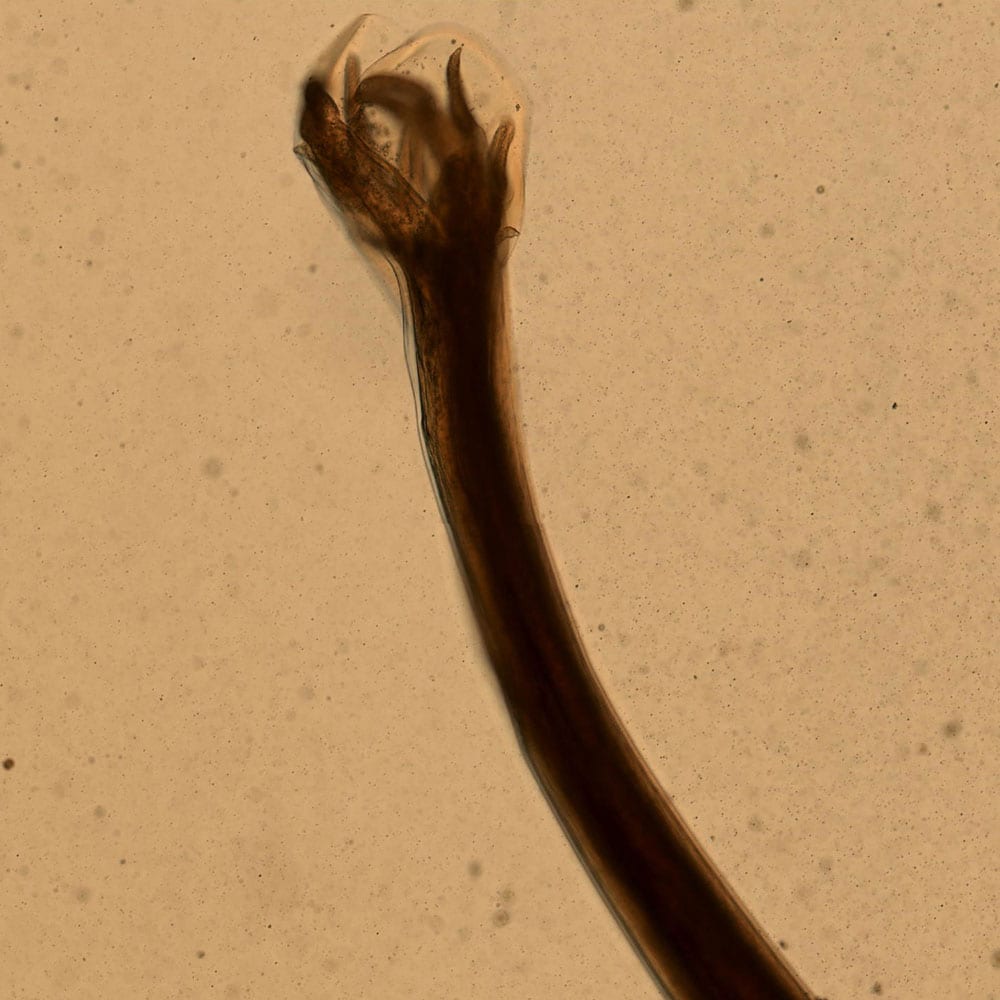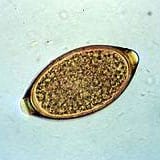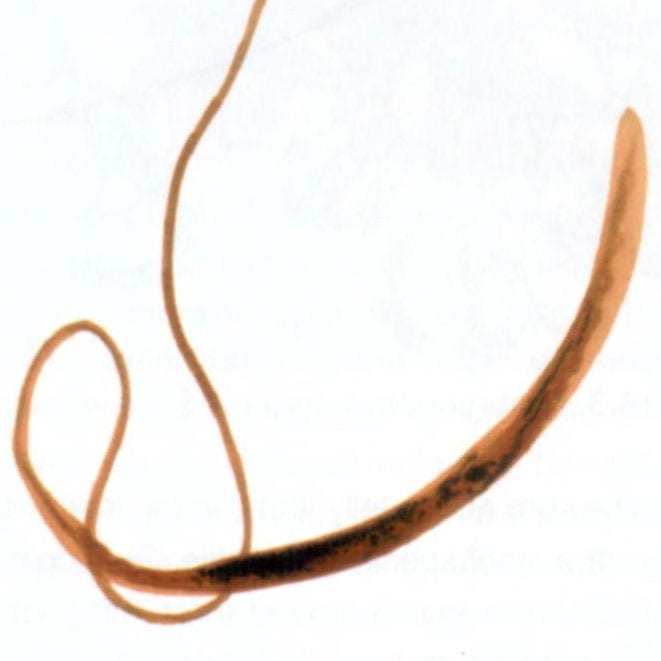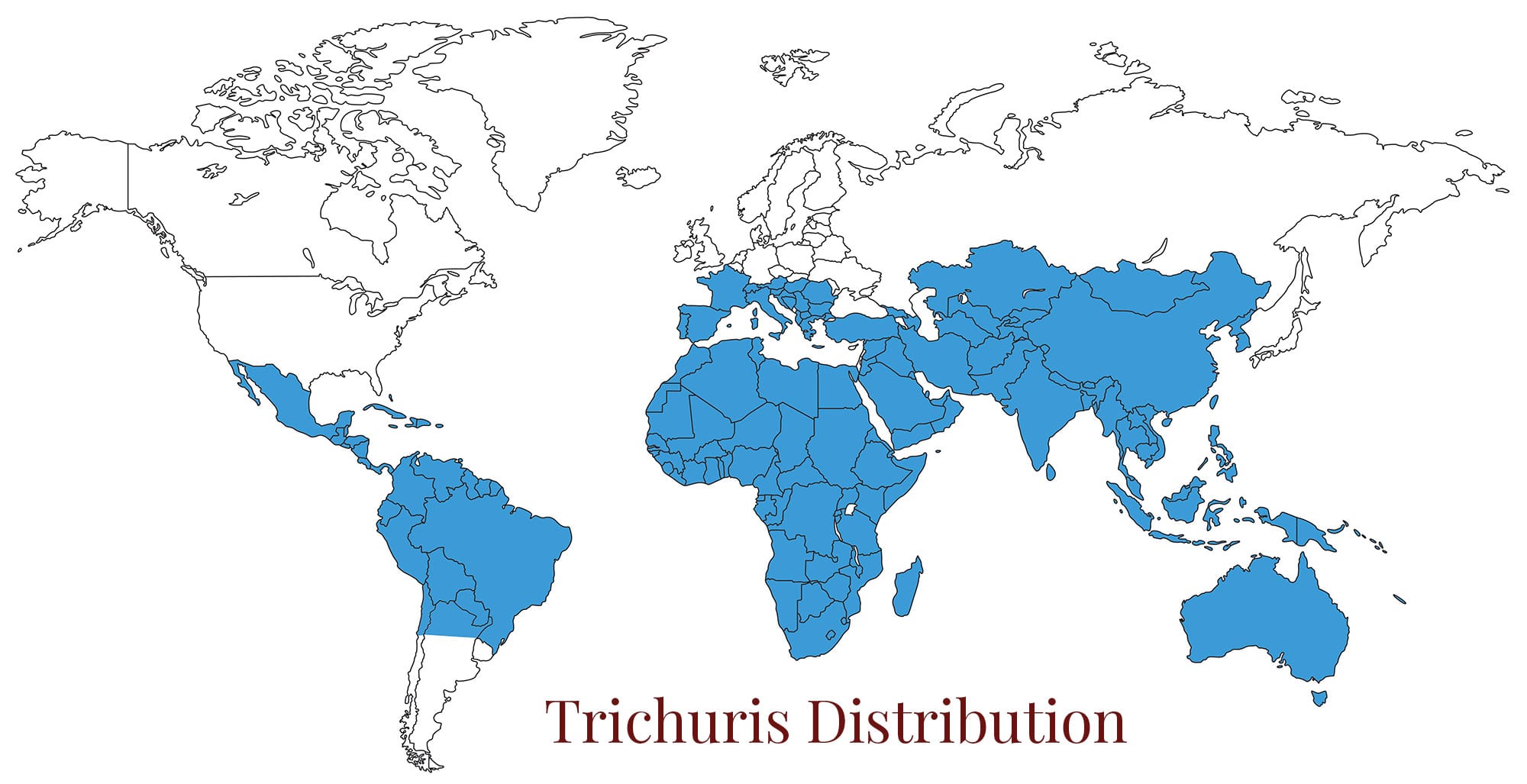Common Neglected
Parasitic Infections
There are billions of individuals who have little hope of improving their lives without major public health intervention strategies that emanate from outside the borders of the countries in which they live. Their lives are burdened with despair, anticipating illness and even eventual death caused by these unseen organisms. Because of the world into which they were born, there are realities that they simply are forced to accept, such as contaminated food and water; essentials that they have no choice but to consume because there are no alternatives. They run a daily risk of infection from organisms that can cause them great harm; these infectious agents are ever-present. They know no borders.
-

Malaria is usually transmitted through the bites of female Anopheles mosquitoes
-

Plasmodium falciparum inside red blood cells
-

Tsetse flies are the biological vectors of trypanosomes.
-

Trypanosoma gambiense blood smear
African Trypanosomiasis
In 1995, WHO Expert Committee estimated that 60 million people were at risk with an estimated 300,000 new cases per year in Africa, with fewer than 30,000 cases diagnosed and treated.
In 2004, the number of new reported cases fell to 17,616 and WHO considered that due to increased control; the cumulative rate is estimated to be between 50,000 and 70,000 cases.
In 2009, the number of new cases reported dropped below 10,000 (9,878) for the first time in 50 years. The estimated number of actual cases is currently 30,000. This trend has been maintained in 2010, with 7,139 cases reported.
-

Kissing bugs are vectors of the Chagas disease parasite Trypanosoma cruzi.
-

Trypanosoma cruzi parasite which causes Chagas disease
-

Phlebotomus papatasi sandflies are the primary vectors of leishmaniasis.
-

Promastigotes of Leishmania parasite which cause leishmaniasis.
Leishmaniasis
Visceral leishmaniasis (VL), also known as kala-azar is fatal if left untreated in over 95% of cases. It is characterized by irregular bouts of fever, weight loss, enlargement of the spleen and liver, and anaemia. It is highly endemic in the Indian subcontinent and in East Africa. An estimated 200,000 to 400,000 new cases of VL occur worldwide each year. Over 90% of new cases occur in 6 countries: Bangladesh, Brazil, Ethiopia, India, South Sudan and Sudan. The kala-azar elimination programmes in South-East Asia are making sustained progress toward elimination, and cases are declining in the three major endemic countries: Bangladesh, India and Nepal.
Cutaneous leishmaniasis (CL) is the most common form of leishmaniasis and causes skin lesions, mainly ulcers, on exposed parts of the body, leaving life-long scars and serious disability. About 95% of CL cases occur in the Americas, the Mediterranean Basin, the Middle East and Central Asia. Over two-thirds of new CL cases occur in 6 countries: Afghanistan, Algeria, Brazil, Columbia, Iran (the Islamic Republic of) and the Syrian Arab Republic. An estimated 0.7 million to 1.3 million new cases occur worldwide annually.
Mucocutaneous leishmaniasis leads to the partial or total destruction of mucous membranes of the nose, mouth and throat. Almost 90% of mucocutaneous leishmaniasis cases occur in Bolivia (the Plurinational State of), Brazil and Peru.
-

The adult schistosome parasitic flatworm is responsible for schistosomiasis infections.
-

Larvae must pass through an intermediate snail host.
-

Eggs of Ascaris lumbricoides (roundworm) in stool.
-

Ascariasis is a disease caused by the parasitic roundworm Ascaris lumbricoides. (Adults)
Ascariasis
Ascaris infection due to A. lumbricoides occurs worldwide; approximately 800 million people are infected. The majority of individuals with ascarisasis live in Asia (73 percent), Africa (12 percent), and South America (8 percent); some populations have infection rates as high as 95 percent. Ascariasis is most common among children 2 to 10 years of age, and the prevalence of infection diminishes among individuals >15 years of age. Infections tend to cluster in families.
The prevalence of A. lumbricoides infection is highest in tropical countries where warm, wet climates favor year-round transmission. In dry areas, transmission occurs predominantly during the rainy months. Ascariasis occurs most commonly in areas where suboptimal sanitation practices are associated with fecal contamination of soil, water, and food.
Hookworm
Hookworm is an intestinal parasite most commonly found in tropical and subtropical climates worldwide, particularly in Africa, South East Asia, the Western Pacific, Latin America and the Mediterranean. Hookworm is one of three members of a family of parasites known as the soil-transmitted helminths (STHs) and affects more than 700 million people across the globe. Left untreated, hookworm causes internal blood loss leading to iron-deficiency anemia and protein malnutrition, particularly in pregnant women and children. Chronic hookworm infection in children contributes to physical and intellectual impairment, learning difficulties and poor school performance. Hookworm is a serious global concern contributing to an estimated 43 percent reduction in future wage earnings in affected areas.
-

Hookworms are intestinal parasitic roundworms that cause types of infection known as helminthiases.
-

Necator americanus, a species of hookworm, an obligatory parasitic nematode that lives in the small intestine of human hosts.
-

Eggs of the nematode (roundworm) Trichuris trichiura.
-

Trichuris female adult.
Photo Credits:
- International Atomic Energy Agency [CC BY-SA]
- Curtis-Robles et al. [CC BY]
- - This media comes from the Centers for Disease Control and Prevention's Public Health Image Library (PHIL), with identification number #10277.
- https://www.gbif.org/occurrence/1571554192

